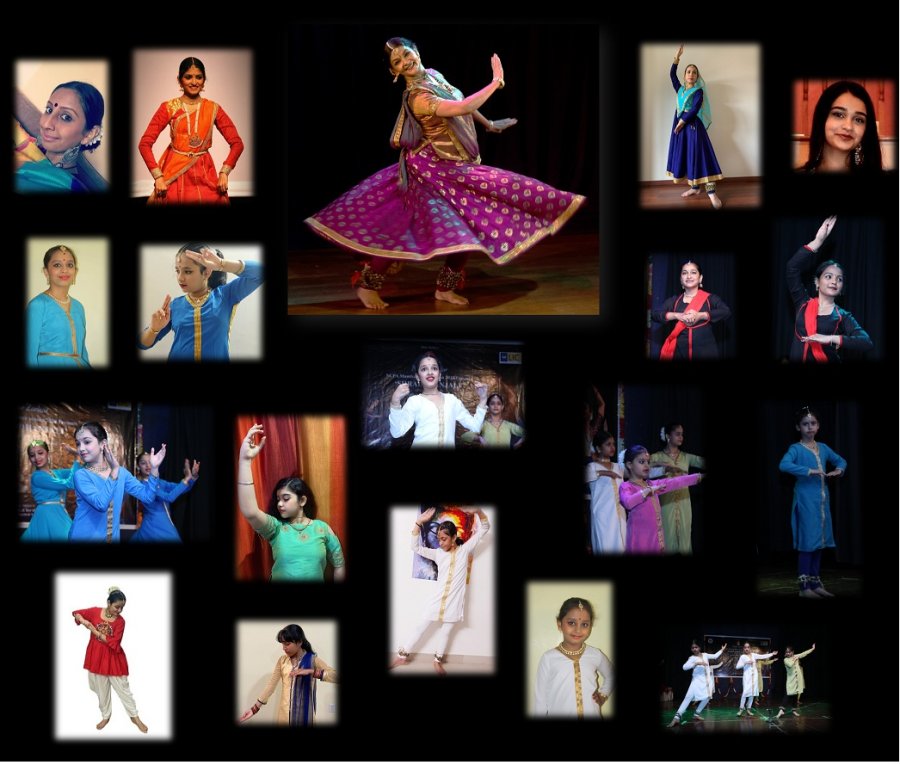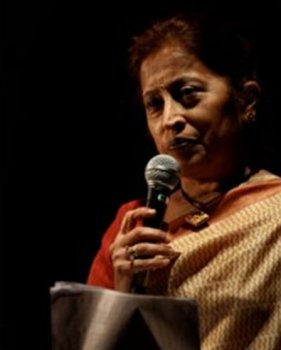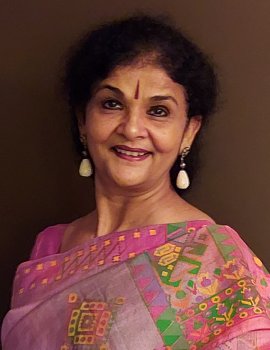
|   |

|   |
Vande Mataram 2021 - Aaricia Ponnet October 2, 2021 On 18 September 2021, the third edition of Vande Mataram took place. Vande Mataram is an initiative by Guru Shila Mehta’s Nupur Zankar. The Kathak festival aims at giving a platform to young Kathak practitioners to perform and interact with senior Kathak artistes. One thing we all agree upon is that the COVID-19 pandemic has taught us that geographic boundary can easily be crossed by using today’s technology. The possibilities that have been explored by companies specialised in video conferencing tools, created bonds that were not possible before to this extent. It has enabled an institute like Nupur Zankar, that has centres in India, the USA, Belgium and the UK, to bring together students from all parts of the world that are connected through the art of Kathak dance. In this way, I was able to attend Vande Mataram festival from my house in Ghent, Belgium. Even though I am a student of Nupur Zankar myself and have attended and participated in a major Kathak festival that had been organised earlier this year, my Guru Shila Mehta and her crew were still able to impress me anew with the professionality and rigour with which they put together this program. Most of the participants were the students aged 7 to18 years old. Even in a live class with the teacher present, it takes a whole lot of energy to discipline them for a stage performance. I was therefore curious how they would do during an online performance where they were performing from their home surroundings - and I must admit I was duly impressed and happily surprised with the result.  Shila Mehta’s disciples All the junior artists had arranged their home spaces in a neat way, creating a plain backdrop with nice decorations here and there. All the girls were in matching costumes and had prepared themselves just like they would do for a live performance. Moreover, students from all over the world were joining, which means that some of the girls were ready in their costumes as early as 6am in the morning, some at noon, again others in the evening. All the participants had moved heaven and earth to make sure they could accommodate to a performance time that worked for all of the Nupur Zankar students, no matter where in the world they lived. This is the beauty of the online platform; not only does it erase geographic boundaries, it is also a very democratic way of offering a platform even to those who might not be able to afford traveling abroad for a performance otherwise. The different performances blended well and the technical team that was spotlighting the participants during the event did a great job in smoothly bringing the different dancers forward. And even when a technical difficulty arose, you could see the hard work that Shila Mehta had put in disciplining the youngsters, as the girls that accidently came forward were shown while consciously maintaining their tatkar and their posture. After the performances there was an award ceremony. I particularly liked this idea of appreciating the different qualities of the young students. I can imagine it must not have been easy for them to continue their practise from their homes in confinement during the pandemic, especially given their young age, yet all of them were there with a contagious enthusiasm. Their smiles when they got announced as an award winner were heart-warming. The awards were sponsored by sympathisers from different countries, a major motivation for these young dancers to keep giving time and effort to their dance practise.  Guru Shama Bhate The second part of the Vande Mataram programme consisted of a lecture-demonstration by Guru Shama Bhate. As the festival was a youth festival, the curator Shila Mehta found a clever way of engaging the youngsters in the introduction of this senior artiste. She provided her students with two pages of information on Guru Shama Bhate and announced that there would be a quiz during the festival. In this way, the students had to actively portray their knowledge on the background of Guru Shama Bhate and were engaged in getting to know more about her. After this, the floor was given to Guru Shama Bhate. She is a 70 years old Kathak artiste but it became evident from the workshop that she is still going into research, and is trying to go deeper into the dance form. As critic Manjari Sinha pointed out, it was amazing to observe how she was still submerged in the taal and laya and is a live example of the strength of an art form such as Kathak. On the whole, the presentation of Kathak by the students was incredibly nice, the lecture demonstration by Guru Shama Bhate was insightful and the discussion she had with the participants was lively. It was wonderful to see that so many people attended – which is not always evident for online shows, especially when participants from different time zones are connecting. Vande Mataram covered all the aspects of Kathak in a small span - a beautiful effort to bring the next generation dancers to the foreground.  Shila Mehta After the festival, I had the chance of interviewing Shila Mehta about Vande Mataram. Congratulations on organising this wonderful festival. Could you elaborate a bit on what drove you to organise Vande Mataram? I wanted to show Kathak as a multi-layered art form, both to the audience that joined from the outside as to my students. I had invited Shama Tai to give a lec-dem to my students. The idea was to inspire them by introducing them to an artist who is now 70 years old and is still going deeper into this art form and researching what Kathak can bring to the dancer as well as to the audience. This is an important aspect of my teaching. Kathak has many layers, and these different layers can appeal to different types of dancers. For me, it is important that my students learn that in order to unveil these different layers, you need time, and dedication. I am curious about this portraying of Kathak as a multi-layered dance form. Which layer do you find important in your teaching? In Kathak, it is the quality of the dance that matters, not the quantity. A dancer can be skilled in his or her techniques, but if this dancer doesn’t look for the layer that connects to him or her, they will not discover the jewels of Kathak. They will not be able to create beauty. In the same way, if you touch Kathak dance only superficially, then you may lose on that joy of creating inner beauty. So then which layer is the most appealing to you? To me, the spiritual aspect of Kathak is one of the most important aspects, trying to uncover the deeper meaning of Kathak, and trying to connect with oneself and find a deeper meaning in our inner connection. If you try to find this deeper connection in dance, you create a connection that is highly sustainable. Something that is sustainable doesn’t end, and is as such alive.Something that ends, eventually dies. If you approach Kathak in a sustainable way and keep on going deeper, the dance form keeps on living. What was your idea behind inviting a senior artist like Shama Tai to this youth Kathak festival? I wanted to show the strength of Kathak as a dance form. By inviting Shama Tai to be part of the festival, the age of the Katha practitioners participating in our event spanned ages 7 to 70. On the one hand, I wanted to show my students the trajectory you can go through as a dancer. On the other hand, I wanted to transcend the usual Kathak program where all the levels dance their bandish. I wanted the audience to appreciate the innate nature of our art forms. Aaricia Ponnet, ICCR Kathak scholar, is the disciple of Shila Mehta. She is one of the driving forces behind the Maya Sapera Dance Company in Ghent, Belgium, actively engaged in promoting and teaching Kathak dance in Belgium. |